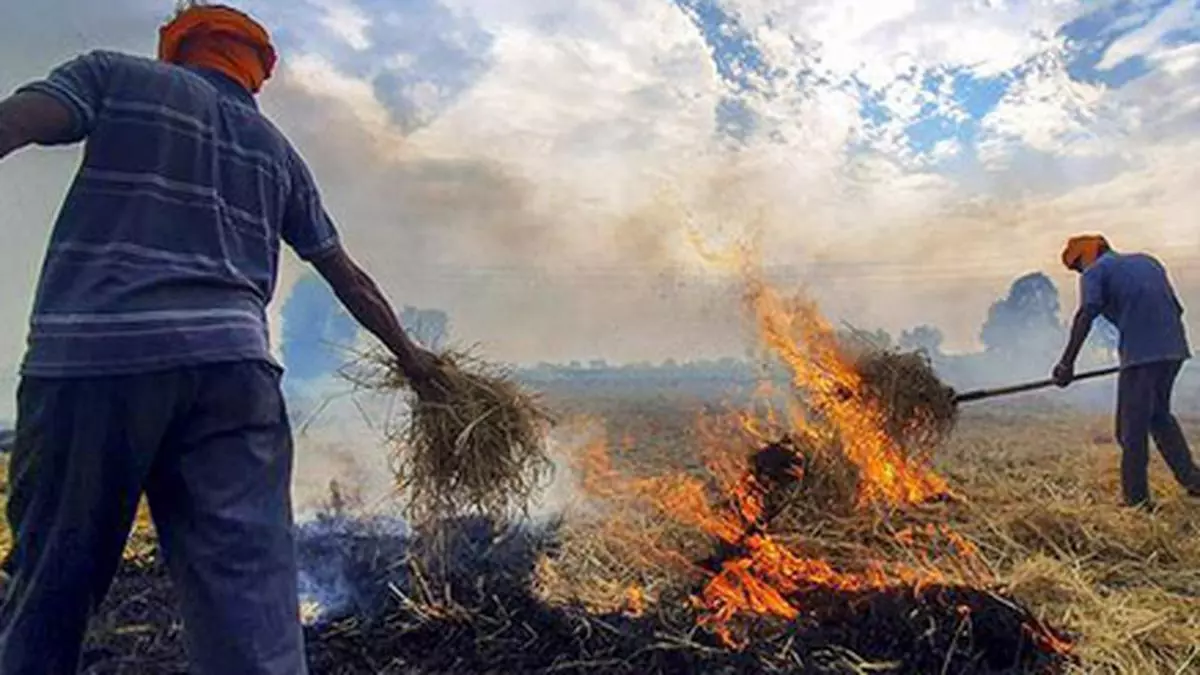354 stubble burning incidents in a fortnight, up 123%
Incidents of stubble burning after paddy harvesting, have more than doubled in September, showing a substantial rise in Haryana, Punjab and Uttar Pradesh. There has been a spurt in such events even in Madhya Pradesh and Rajasthan during September 15-30 compared with the year-ago period.
Nevertheless, the Centre is hopeful of a reduction in cases this year at the end of the season due to various measures initiated by it. During September 15-November 30, 2022, which is the main paddy harvesting period in the north, there was 24 per cent dip in burning cases to 69,615 incidents compared with 92,047 such incidents reported in the previous year. The highest number of cases were reported in Punjab at 49,922.
According to the Consortium for Research on Agroecosystem Monitoring and Modelling from Space (CREAMS), which is managed by Indian Agricultural Research Institute (IARI) or Pusa institute, the total number of stubble burning incidents in the country has been recorded at 354 during September 15-30, up from 159 in the year-ago period.
Punjab, which had reported 214 cases of crop residue burning last month against 147 in the year-ago period, has witnessed 81 such incidents on September 30 and 68 on September 29. The maximum cases were reported from Amritsar district(174 cases).
Haryana records 75 incidents
Haryana has recorded 75 incidents, including 17 in Kurukshetra and 13 in Karnal, whereas in the year-ago period, only one case was observed in Jind. This year, there were 12 incidents in Sonipat, 11 in Ambala, 7 in Yamunanagar, 5 in Fethabad and 3 each in Panipat and Jind. All these districts in Haryana are leading producers of Basmati rice.
Experts said that there was a higher demand from commercial dairy farmers last year to collect the residues which is missing this time.
Among other States, Uttar Pradesh has seen 33 cases of stubble burning while Madhya Pradesh had 21 cases and Rajasthan 10. During September 15-30, 2022 there were 10 incidents in Uttar Pradesh, zero in Madhya Pradesh and one in Rajasthan.
Stubble burning in these States has been continuing in the past few few years as farmers prefer to burn the residues rather than spend money to clear it through manual labour and sell it as fodder, because of economic considerations. Besides, since Punjab, Haryana and Uttar Pradesh do not implement paddy sowing before the June 20 dateline, farmers get little time to prepare the field for wheat planting after the paddy harvest.
This year, the paddy acreage, including Basmati, in Punjab has increased to 32 lakh hectares (lh) from 31.68 lh in 2022 while it has risen to 15.2 lh from 13.9 lh in Haryana. Similarly, it surged to 59.01 lh from 57.78 lh in Uttar Pradesh and to 33.85 lh from 32.37 lh in Madhya Pradesh.
Addressing a workshop on Clean & Green Solutions for Rice Straw Management, organised by the Confederation of Indian Industry (CII) in partnership with Ministry of Agriculture and Farmers Welfare, on September 29, S Rukmani, a joint secretary in the ministry said that the government is committed to helping farmers to manage stubble.
“We have launched revised guidelines on crop residue management (CRM) and are now promoting ex-situ management of straw, offering financial assistance for the capital cost of machinery through subsidy of up to 65 per cent for projects, while industry will need to contribute 25 per cent towards operational costs,” she said stressing that stubble can be a source of wealth.
